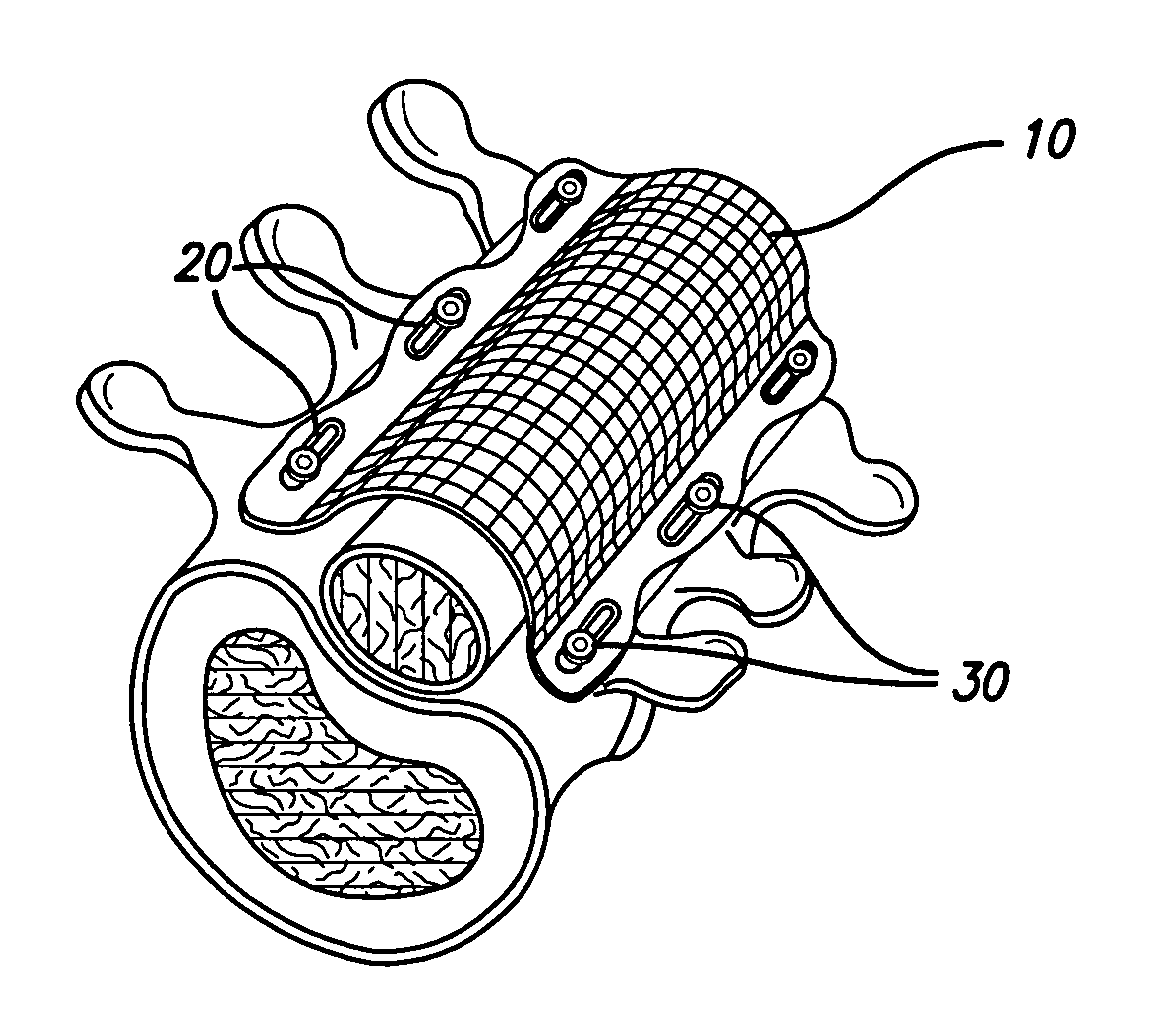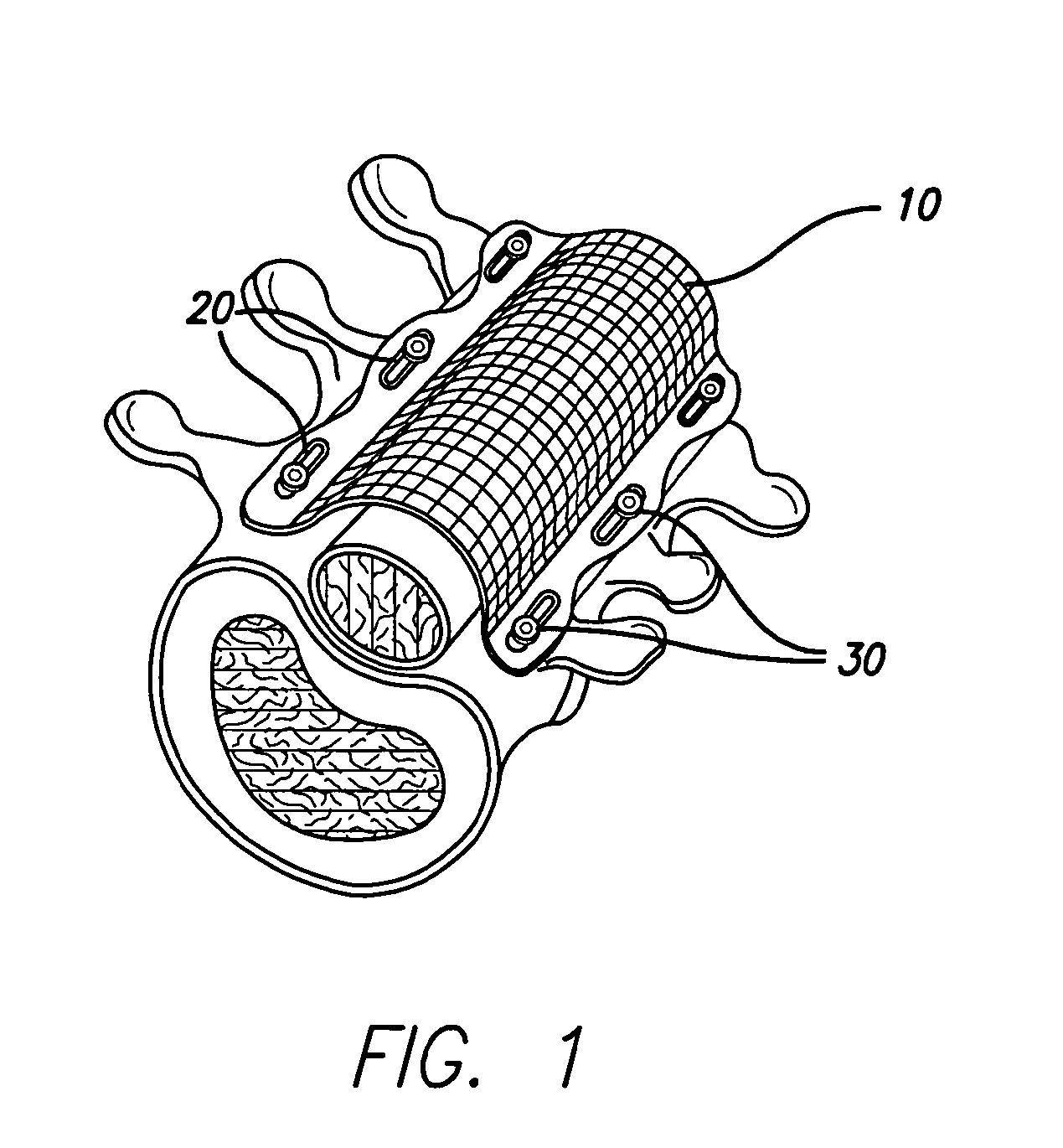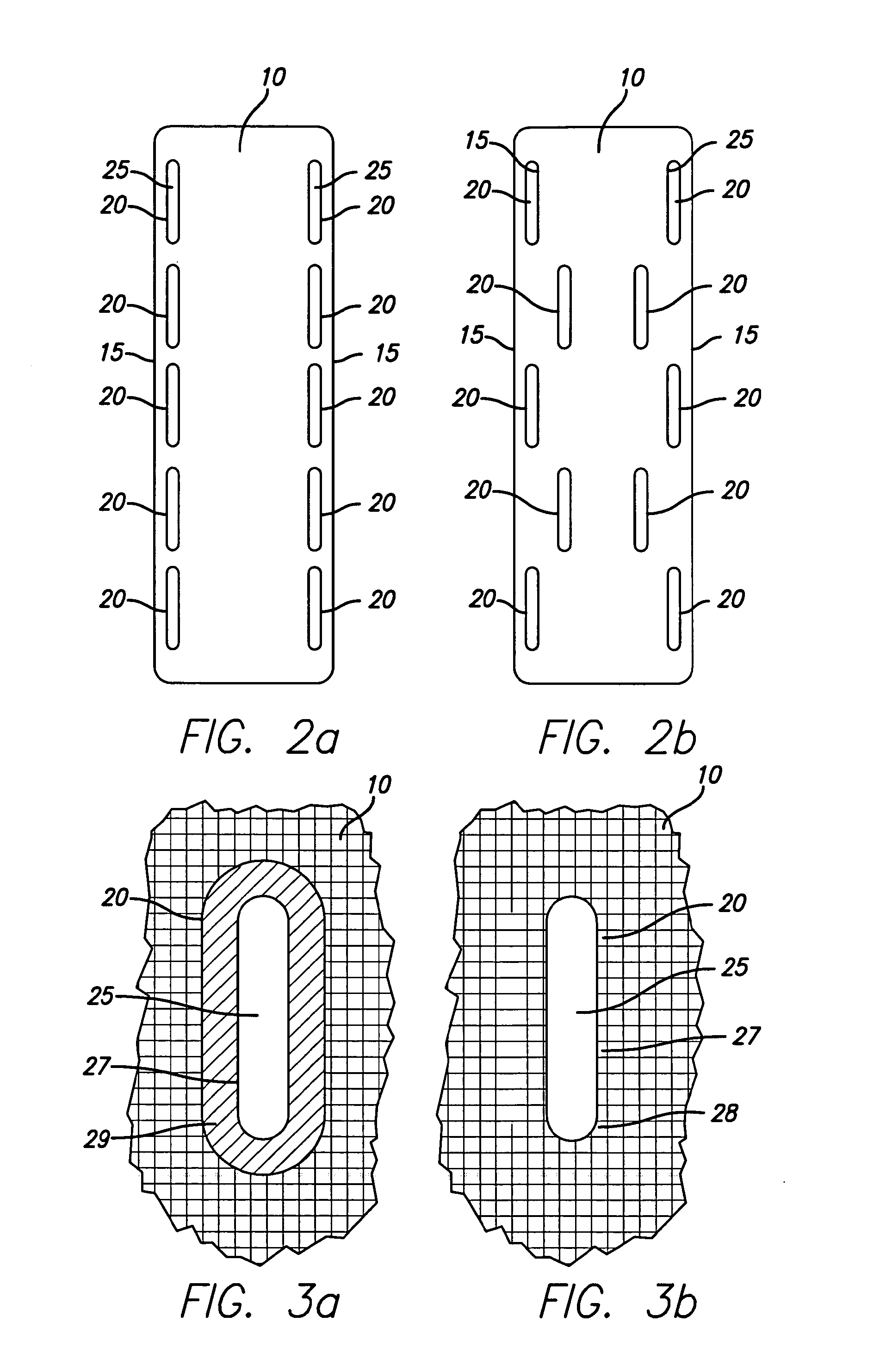Bone anchored surgical mesh
a surgical mesh and bone anchored technology, applied in the field of bone anchored surgical mesh, can solve the problems of spinal deformity, pain, neurologic problems including myelopathy or nerve root symptoms, and the subsequent spinal operation and revision surgery are much more difficult, so as to and reduce the risk of fractur
- Summary
- Abstract
- Description
- Claims
- Application Information
AI Technical Summary
Benefits of technology
Problems solved by technology
Method used
Image
Examples
Embodiment Construction
[0031]As illustrated in FIG. 1, in general terms, the present invention provides a new and improved spinal implant including a surgical mesh covering that can be anchored to bone. Although described herein for application to the spine, application to other bony anatomic structures is also included in the invention. The surgical mesh 10 has elongated slot-like anchoring members 20 which receive bone screws or other bone fasteners 30. The mesh structure may be affixed to adjacent vertebrae with the screws. The screws or other bone fasteners 30 are placed within the slot-like anchoring members 20 formed in the mesh structure which allows the mesh structure to articulate and move with respect to other mesh structures located on adjacent vertebrae. The elongated slots of the anchoring members 20 provide for variable placement of the screws 30 and are capable of permitting sliding and gliding motion of an anchoring member upon a bone fastener 30. Preferably, the anchoring member slidable ...
PUM
 Login to View More
Login to View More Abstract
Description
Claims
Application Information
 Login to View More
Login to View More - R&D
- Intellectual Property
- Life Sciences
- Materials
- Tech Scout
- Unparalleled Data Quality
- Higher Quality Content
- 60% Fewer Hallucinations
Browse by: Latest US Patents, China's latest patents, Technical Efficacy Thesaurus, Application Domain, Technology Topic, Popular Technical Reports.
© 2025 PatSnap. All rights reserved.Legal|Privacy policy|Modern Slavery Act Transparency Statement|Sitemap|About US| Contact US: help@patsnap.com



